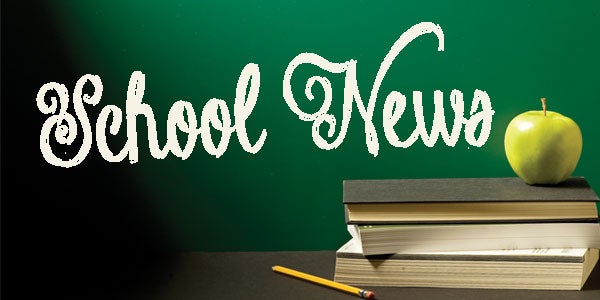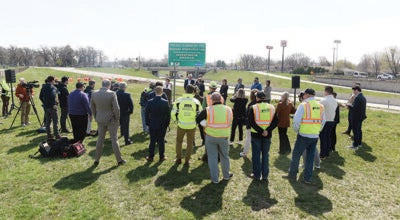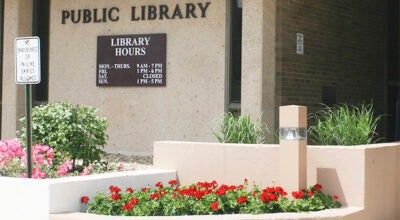Minnesota looking to make K-12 social studies more inclusive
Published 7:34 pm Sunday, January 3, 2021
|
Getting your Trinity Audio player ready...
|
ST. PAUL — Minnesota’s K-12 social studies standards are undergoing extensive revisions in search of a more inclusive approach that teaches about people previously left out of the discussion.
A diverse committee’s first draft, now open for public comment, gives greater consideration to the Dakota and Anishinaabe tribes and covers for the first time the civil rights struggles of LGBTQ people.
The draft standards, according to Doug Paulson, the state education department’s academic standards director, are “more inclusive” and “culturally affirming.”
Still, some committee members think the first draft doesn’t go far enough in that direction.
“The revised standards show a commitment to acknowledging the existence of multiple narratives and that we as a state challenge the Eurocentric pedagogy that prevails in our education system,” Jose Alvillar said.
But Alvillar and others want a more prominent place in the standards for ethnic studies, which the committee decided to embed throughout the document.
Aaliyah Hodge said the first draft doesn’t reflect enough of the work that an ethnic studies subgroup has been doing. She hopes subsequent drafts will do more to bring people of color into focus.
“This overwhelming dominance of Euro-America perspectives is not only damaging to our children’s identity but also leads many students of color to disengage as they don’t see themselves reflected,” she said.
The state’s academic standards, which establish what students are expected to know and be able to do in a given subject, are updated every 10 years. It’s still up to each school district to decide which curricula they’ll use to teach those standards.
During the last update, Paulson said, the state de-emphasized dates and names in favor of standards that require students to participate in their learning.
“If we can Google something, is it really a standard? We want students to be critical thinkers and be able to engage in the content,” he said.
The revision cycle before that, in 2003, saw a high-profile battle between the state’s conservative education commissioner and an ad hoc committee of academics. The Legislature ultimately merged competing standards into one.
Lawmakers no longer play a hands-on role with the standards.
It is expected that a final draft will be sent to the education commissioner for approval around the end of this school year. After a rulemaking process, schools likely will be expected to implement the standards no later than fall 2025.
Much is expected to change before a second draft is published in February. The committee intentionally held off on the full consideration of several areas, including diversity and equity, the contributions of American Indian tribes, technology and computer science skills, and alignment with other academic standards.
Themes from two early public comment sessions included a desire for greater emphasis on ethnic studies and the inclusion of the Sikh religion, as well as bewilderment over the fact that the Holocaust is not mentioned in the first draft, which Paulson described as an “oversight” as the committee moved standards around.
Among the more obvious changes between Minnesota’s current social studies standards and what the committee is proposing is an increased emphasis on American Indian tribes.
The first draft elevates the study of indigenous nations in America’s past and present by assigning it its own “anchor standard,” one of 22 in the document.
The Anishinaabe and Dakota appear a combined 39 times in the proposed standards, compared to 18 in the current set.
And tribal mentions are woven throughout the new standards, from how sovereignty impacts political boundaries to what gaming does for local economies and what tribal “wisdom” says about developing “one’s sense of place.”
High school lessons on how local governments operate would include tribal government, in addition to county, city, township and school board.
And when kindergarteners study the American Flag and Pledge of Allegiance, they’ll also learn about the symbols and traditions of the Anishinaabe and Dakota.
Absent from current social studies standards, LGBTQ people get three mentions in the committee’s first draft.
Fifth graders are asked to investigate how LGBTQ people and other groups have advocated for greater rights.
Sixth graders are asked to “describe the goals of activists in their quest for their voice to be heard, especially anti-war, racial minorities, immigrants/refugees, women, LGBTQ and indigenous people.”
And high schoolers are expected to “develop a respectful awareness about how ideas and norms about gender have changed over time.”
The new standards also would add “gender identity” to the discussion of how TV, the internet and other media influence cultural identity and social and political movements.
Many standards are being amended in subtle ways in order to tell a more complete story of how various groups of people experience the world.
For example, students today learn at several points about interest rates and how credit markets impact their finances. The committee wants high school students to also “explain how systemic inequity has been a barrier to accessing credit.”
Another new standard in economics would teach first graders that “trade between Indigenous and non-Indigenous peoples has not always been voluntary and fair.”
Additional changes encourage students to consider why minority perspectives have been absent throughout history, such as during the drafting of the Declaration of Independence.
Similarly, the first draft builds on existing standards with more specific language about the people impacted.
One standard for high schoolers, for example, makes clear that due process and equal protection should be studied in the context of “the disabled, Hispanics, Native Americans, Asians and other minority groups.”
Likewise, sixth grade lessons on the juvenile justice system would require students to also “evaluate the impact on Black, Indigenous, Persons of Color (BIPOC) communities.”
In some places, tweaks to existing standards encourage students to make connections between the past and present.
For example, as high school students study the constitutional amendments that followed the Civil War, they would be asked to make “sure to connect this history to persistent discrimination and inequity in the present.”
Another new anchor standard asks students to “explore spatial ways of thinking, ways of knowing (culture) and ways of being (identity) from different perspectives, including indigenous voices.”
Within that is a fifth grade benchmark that touches on why place names are being changed, as well as high school benchmarks on the intersection of multiple identities and how the “social construction of race … was used to oppress people of color.”
The newly proposed standards would more closely and explicitly link climate change to the actions of humans.
One of the 22 new anchor standards is to “evaluate the relationship between humans and the environment including climate change.”
The current standards include some teaching on humans interacting with the environment, but the words “climate change” appear only in reference to world history between the years 600 and 1450.
Throughout the first draft are changes that encourage students to see themselves in history and take an active role in society.
Where the current standards discuss the importance of voting, first graders in the new standards would learn about additional ways to influence decisions, such as running for office and participating in public meetings.
Existing benchmarks ask students to evaluate how political parties, interest groups, corporations, think tanks, the media and public opinion influence public policy.
The new set explores “how people take action to solve their problems and shape public policy.”






